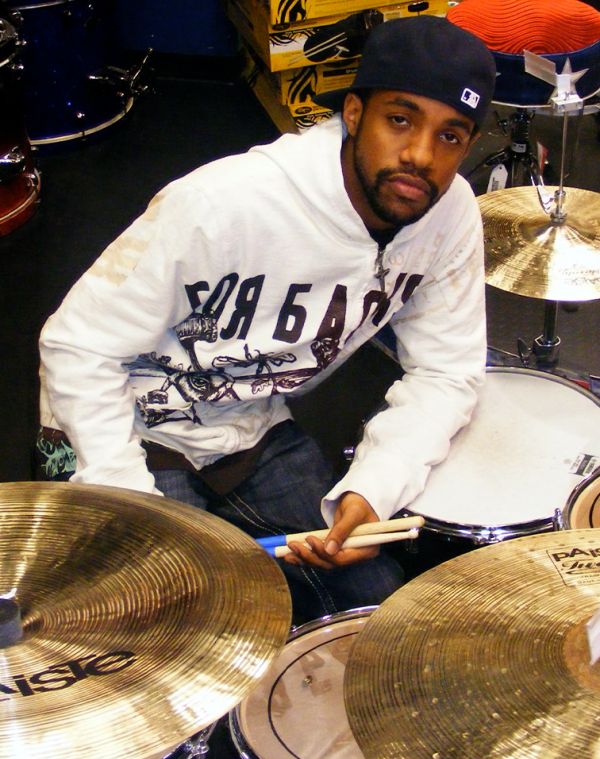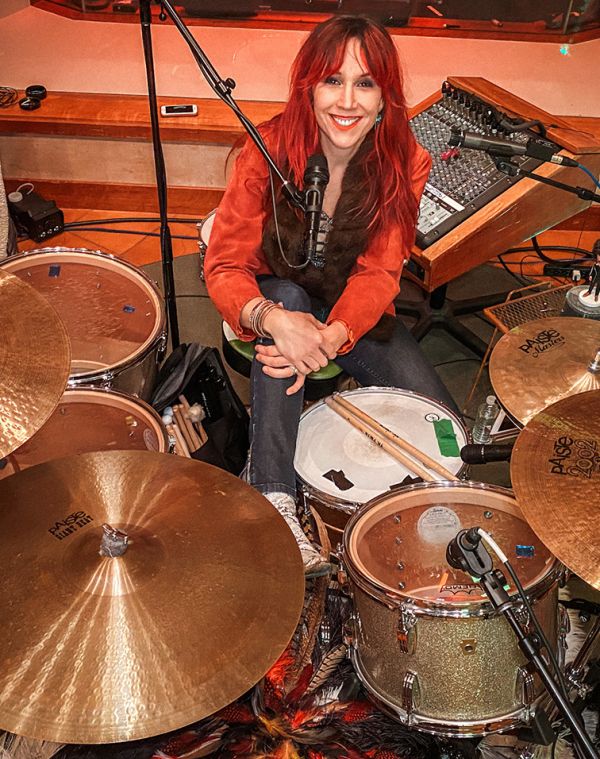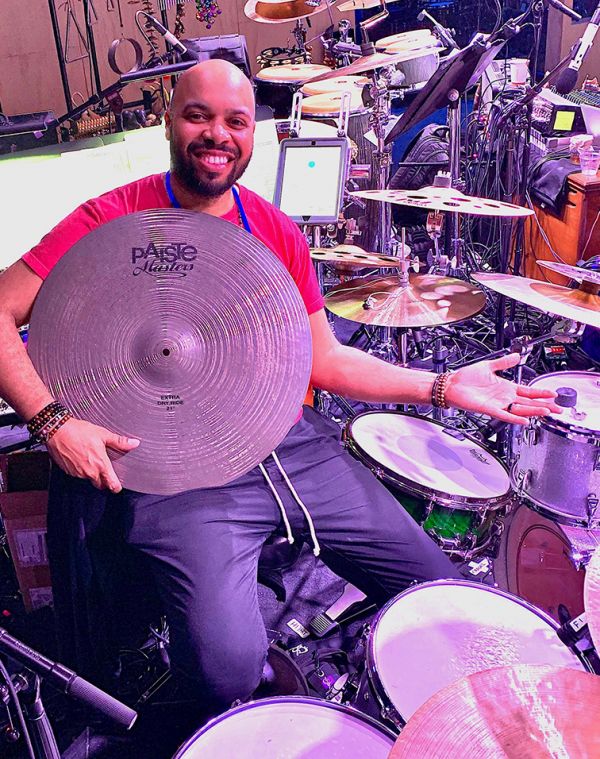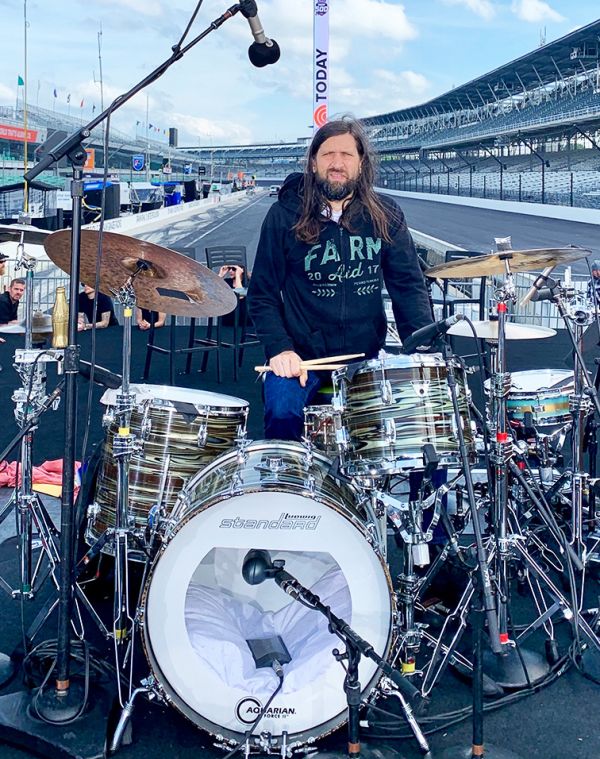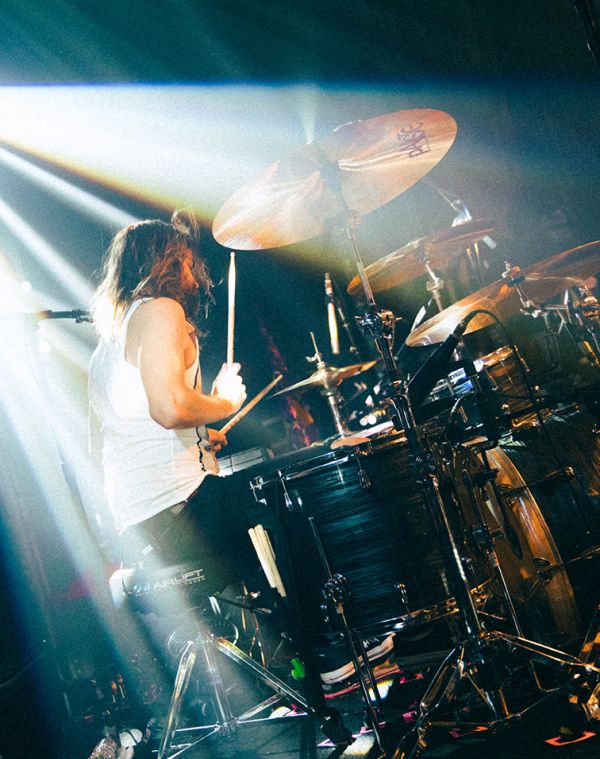

Take a in-depth look at suggestions on how to make cymbal choices that fit your musical needs.
General Considerations
-
Personal Preference
This is the most important consideration. Even if you do not know much about cymbals, you can trust your ears. You can easily decide what music you like. So you have the natural ability to appreciate musical sound. You can further develop your appreciation of cymbal sound by listening to many different types of cymbals, by visiting a drum store, or using our Soundroom.
-
Type of Music
Essentially, all music can be categorized rather broadly by thinking about its general volume level, its complexity in rhythm and harmonics resulting from instrumentation and musical phrasing, and the nature and strength of the frequencies involved resulting from the type of acoustic and electric instruments used.
-
Size of Ensemble, Group or Band
There are two main considerations with respect to this category, volume and complexity. Obviously, more instruments playing together will tend to produce more volume (see volume further down). In a smaller grouping, each instrument and therefore also the cymbals are more prominent. So you should choose the cymbals with emphasis on the merit of their color and feeling. In larger groupings, the music is more complex, so you should consider the ability of the cymbals to project and have presence within the music. Amplification has the same effect as a larger grouping.
-
Your Existing Cymbals
New cymbals have to blend and harmonize with the cymbals you already own. Whenever possible you should play a cymbal you consider for purchase along with one or two of your main cymbals, like your main ride and crash cymbal.
-
Your Drum Sticks
The size of cymbals you play should match the size of your drumsticks. Smaller, thinner cymbals and large heavy sticks do not go together, as premature breakage might result. Smaller, thinner drumsticks will not have enough mass to achieve the full sound potential in larger heavier cymbals.
-
Your Drum Sizes
Drums and cymbals should generally match in size relationship so that they blend together musically. Larger drums usually require larger cymbals.
-
Performance & Rehearsal Environment
This factor has to do with the size of the space you usually play in, which could range from a small practice room, to a small club, to a large hall, and even to outdoors playing. The smaller and more confined the space is, the smaller and quieter your cymbals should be. That way your cymbal sound will not overpower the music. The larger and more open the space is, the larger and more powerful your cymbals should be so that you can produce the desired sound without undue effort and avoid overplaying cymbals.
-
Recording
Because of the sensitivity of recording equipment, studio environments generally require harmonic sounding cymbals with no disturbing frequencies and sound flaws. Paiste pays special attention to uniformity wiithin our cymbals, so all our cymbals perform well in recording situations.
-
Overall Volume & Cymbal Size
This point cannot be stressed enough. You have to consider the general volume level when selecting cymbals. Many cymbals sound wonderful by themselves, but they must also sound great within the music. Smaller, thinner will not distinguish themselves in higher volume situations and their characteristic beauty can get lost. This can cause the drummer to overplay and eventually break a perfectly durable cymbal.
-
Variety & Consistency
You should consider selecting a variety of sound colors and sizes so you can maximize the range of colors and dynamics in your cymbal set. At the same time you should make sure that your basic cymbals (ride, crash, hi-hat) correspond to each other in size and make sense together musically.
-
Looks
The visual appearance of our cymbals is a byproduct of the cymbal crafting methods required to achieve a certain sound. We do not design cymbals primarily for looks. But form follows function and it seems that good sound tends to produce good looks. It is tempting to go for a certain look for your drum set and usually that works out well anyway. But we would like to stress that sound and function are more important than anything else.
-
Series Selection
There is a fairly common notion among drummers and percussionists that one should stay within a certain series to achieve a harmonic set sound. For our cymbals, this is not necessary. We design our cymbals so that they are harmonic within themselves, within their series, and within all of our cymbals. Feel free to mix and match from our entire program.
-
Warranty
We offer a two-year warranty against defects in material or workmanship. Through the decades of making cymbals, we have found that the vast majority of cases involving our cymbals in a warranty claim are not related to defects or workmanship problems. In most cases the cymbals were either selected improperly (see Overall Volume & Cymbal Size) or not treated correctly. We test durability during research and development and only release cymbal types that will last in the intended environment and usage. If you follow the advice given above and in the Care and Usage section, you will enjoy our cymbals for a very long time.
-
Cost
Obviously cymbals are expensive instruments. If budget is an issue, you might want to consider our lesser-priced ranges, even if you are a working player. You might be surprised by the quality of sound and function you will find. Also, purchasing lower cost cymbals may allow you to acquire more models overall, and thereby to achieve greater variety within your set. Avoid buying smaller cymbals than you really need for cost reasons.
Testing Cymbals
-
General Testing Advice
For accuracy and consistency in the selection process, be sure that the stick you test cymbals with is the model you normally play with, as cymbals can sound very different with different sticks. Play cymbals at various dynamic levels, to test their ability to produce a variety of sounds. Be sure to test them at your normal volume range. If you normally play loud, be sure to test them at that level to verify that they will perform as desired to avoid later overplaying.
Play the cymbal on all surface areas and on the edge using a variety of techniques (crash across the edge, with the shank across the surface, with the tip on several positions of the surface, with the stick side on the bell). Also consider playing the cymbals with a mallet. This will help you judge the sound potential of the cymbal you are testing.
Play the cymbal with the tip of the stick in the same position around the cymbal. It should produce consistent sound or the cymbal is not even, and will tend to produce disharmonic sound. Listen and test for sound flaws. These include conflicting harmonics, high pitched ringing, odd frequencies, and dead spots in the surface.
Take the cymbals off the display and play them in a drum set. Cymbals sound completely different and generally better at the drum set than on displays. Have someone else play the cymbals for you while you walk away a distance. It is important that you enjoy the sound close up, but often you are playing for an audience and the cymbals should sound good to them, too.
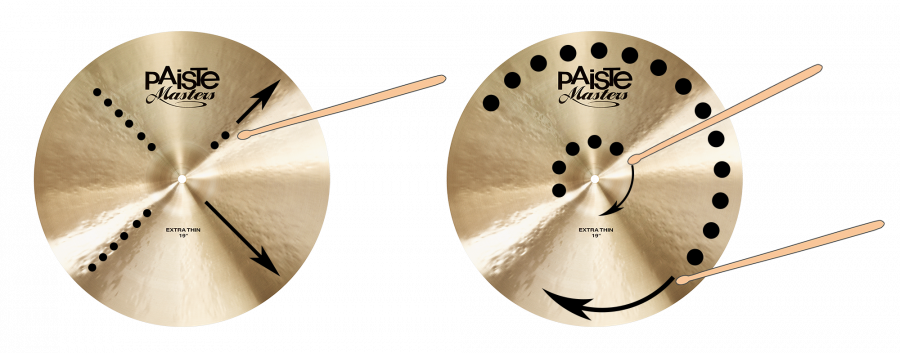
-
Ride
Play various ride figures with varying tempo and dynamics. Be sure that the balance between wash and stick sound is to your liking. Check the ride sound produced at various surface points. Make sure you like the sound in as large an area as possible so that you can use the resulting variety. Check the bell sound for its character with the side of the stick because that’s how you will often play it. See if you can also crash the ride cymbal. This may not be important, but if you can do it and like it, it might be useful later on.
-
Crash
Crash the cymbal across the edge and the surface at varying dynamics. Be sure you get the variety you're looking for. Listen for the responsiveness and the decay. Make sure the cymbal speaks fast enough for your liking and that its fade has the length you are looking for. See if you can also lightly ride the crash cymbal. This may be useful at some point and increase the sound variety of your set.
-
Hi-Hat
Be sure to test Hi-Hats on a properly functioning hi-hat stand. Include the various playing techniques in a hi-hat in your testing (chick sound, tight closed playing, slightly open playing, loose open playing, open closed figure playing). Make sure you like all the resulting sounds. Be sure to play and listen to the individual top and bottom cymbals and how they blend together. Optional: Consider putting together your own hi-hat creation with tops and bottoms from different standard pairings. This is not usually necessary but could help you achieve the sound you are looking for.
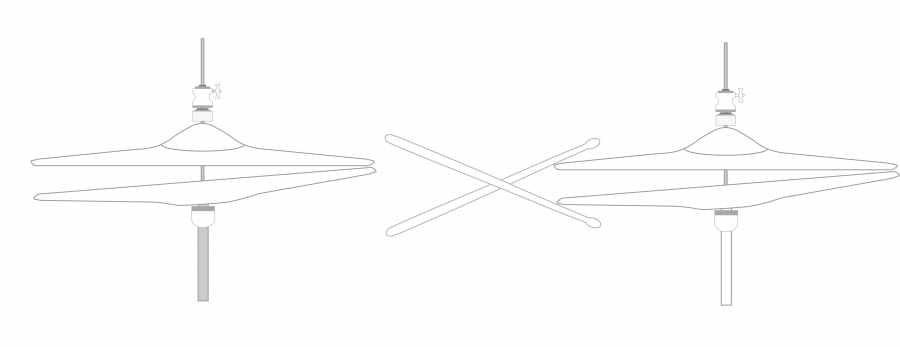
-
Other Cymbals
Crash the splash cymbal across the edge and also try the choke effect by muting the cymbal quickly with your free hand.
If you will play a china or swish upside down, be sure to test it that way. Also try crashing and riding the china or swish to see which of those functions it performs well.
For stacks and percussion cymbals be sure to try sticks and mallets. Experiment with different techniques and see what sounds these cymbals produce at various striking points.

